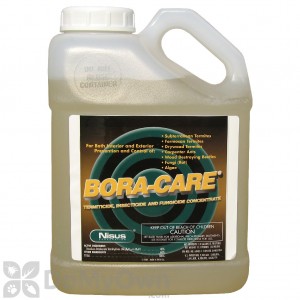Did you know that nationwide, termites cause on average over a billion dollars in damage every year? In fact, termite infestation costs more than hurricane, tornado and windstorm damage combined. Unlike rowdy storms however, termites are the ‘silent destroyer’ that often goes unnoticed. Sound like a serious problem? It is, and DoMyOwn.com wants to help you solve it yourself with our line of professional termite control products.
How to Identify Swarming Termites
Swarming termites look very similar to swarming ants, and sometimes it can be hard to distinguish between the two. Here are some things to look for:
Flying Ants
- Antennae that are bent or "elbowed".
- Bodies have a thin mid-section.
- Wings are usually NOT alike in size and shape.
Swarming Termites
- Antennae that are straight, curved and beadlike.
- Thicker mid-sections.
- Wings are very similar in size and shape.
Subterranean termites
As their name implies, subterranean termites live under ground and dig tunnels which allow them to access your home and any cellulose supply that they may find there (i.e. usually wood or paper). Signs of subterranean termites include the ‘swarming period’ during which time some of the subterranean termites fly from their colony to build new ones. These termites may look somewhat like ants but as the image above illustrates, termites have wings that are more or less equal in size, a thicker waist and straighter antennas. Additional signs include shelter tubes or tunnels that are composed of mud and can usually be found on walls, chimneys, joists, piers, plumbing and additional fixtures.
Subterranean termites can also give themselves away by leaving broken structural members, wood that is hollow inside and obviously damaged, cracked soil or blistered wood.
Drywood termites
These termites actually make their home inside of yours. You can often detect drywood termites by looking for wood blisters or discarded wings or termite waste that looks like sawdust. This ‘sawdust’ can usually be found on windowsills or floors.
Termite Control Products
DoMyOwn.com offers a wide range of professional do-it-yourself termite control products and supplies including:
Liquid Termite Control
Termite Baiting Systems
Borate Wood Treatment Products





/1331_with_trelona_(003).jpg.thumb_300x300.jpg)